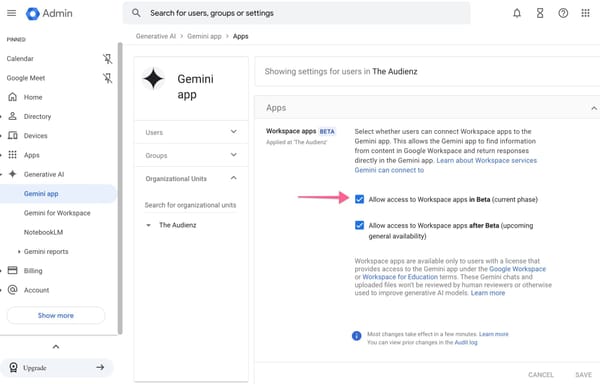Backlinks and SEO: The Hidden Systems That Actually Move Rankings (And Why Everything You Know Is Wrong)
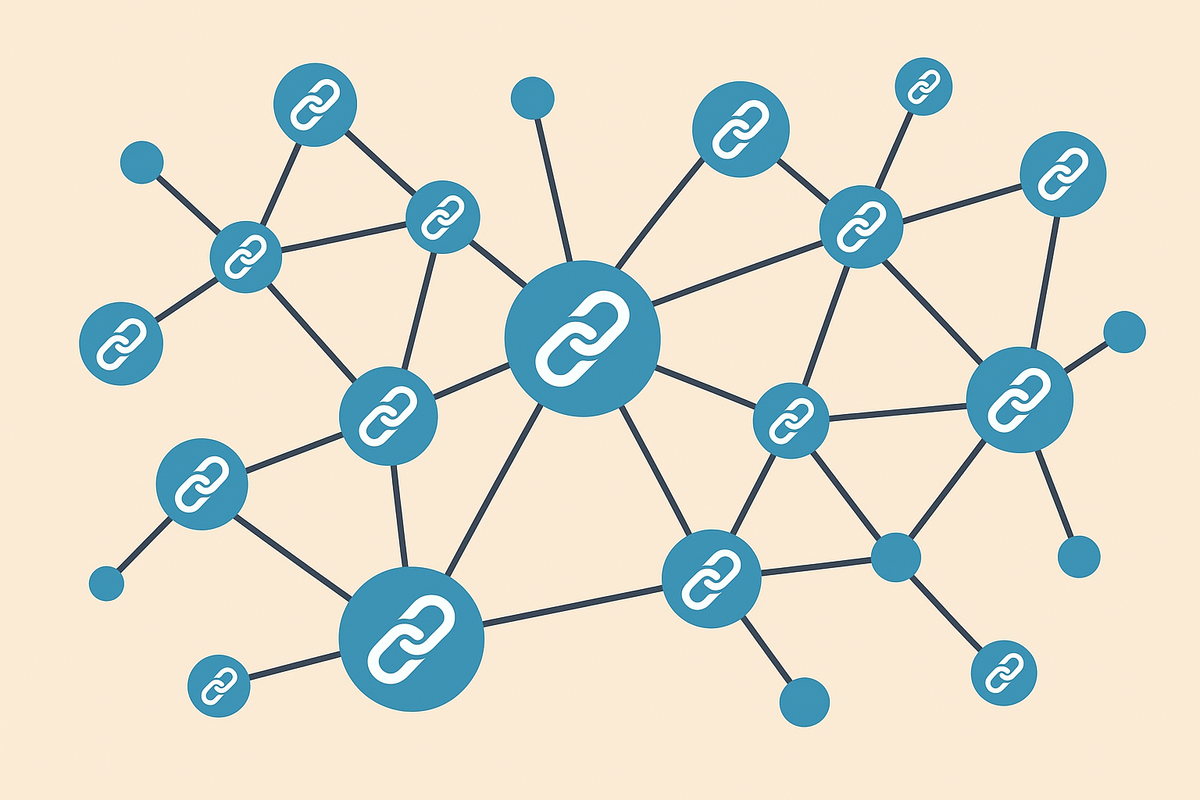
Table of Contents
- The Real Story Behind Modern Link Building
- How Search Engines Actually Judge Your Links Now
- Why User Behavior Makes or Breaks Your Backlinks
- The Anti-Gaming War: How to Stay Ahead of Algorithm Updates
- Building Links Across Every Platform That Matters
- Final Thoughts
TL;DR
- Search engines now validate backlinks by checking if the connection actually makes sense - not just domain authority scores
- The timing and rhythm of your link acquisition matters as much as the links themselves - artificial patterns get caught fast
- User behavior signals (click-through rates, dwell time, social shares) directly impact how much SEO value each backlink provides
- Modern anti-gaming systems use machine learning to spot unnatural link patterns, making authenticity crucial
- Cross-platform link ecosystems mean podcast mentions, newsletter features, and social engagement can cascade into powerful web backlinks
- Building sustainable link portfolios requires systematic, long-term thinking rather than quick-win tactics
The Real Story Behind Modern Link Building
Look, I've been doing SEO for years, and I'll be honest - I used to think I had it all figured out. Then Google completely flipped the script on me, and suddenly all my "proven" link building tactics started falling flat (no tactic, lol).
Here's what really happened: I was still playing checkers while Google had moved on to 3D chess. They weren't just counting links anymore - they were actually understanding what those links meant.
The wake-up call came when a client's site with 500 backlinks started outranking their competitor who had 2,000. That shouldn't happen, right? Except it did, and it kept happening until I finally figured out what was going on. With Google using over 200 factors in their algorithm for ranking websites and the #1 result getting approximately 27.6% of all clicks, the stakes for getting link building right have never been higher.
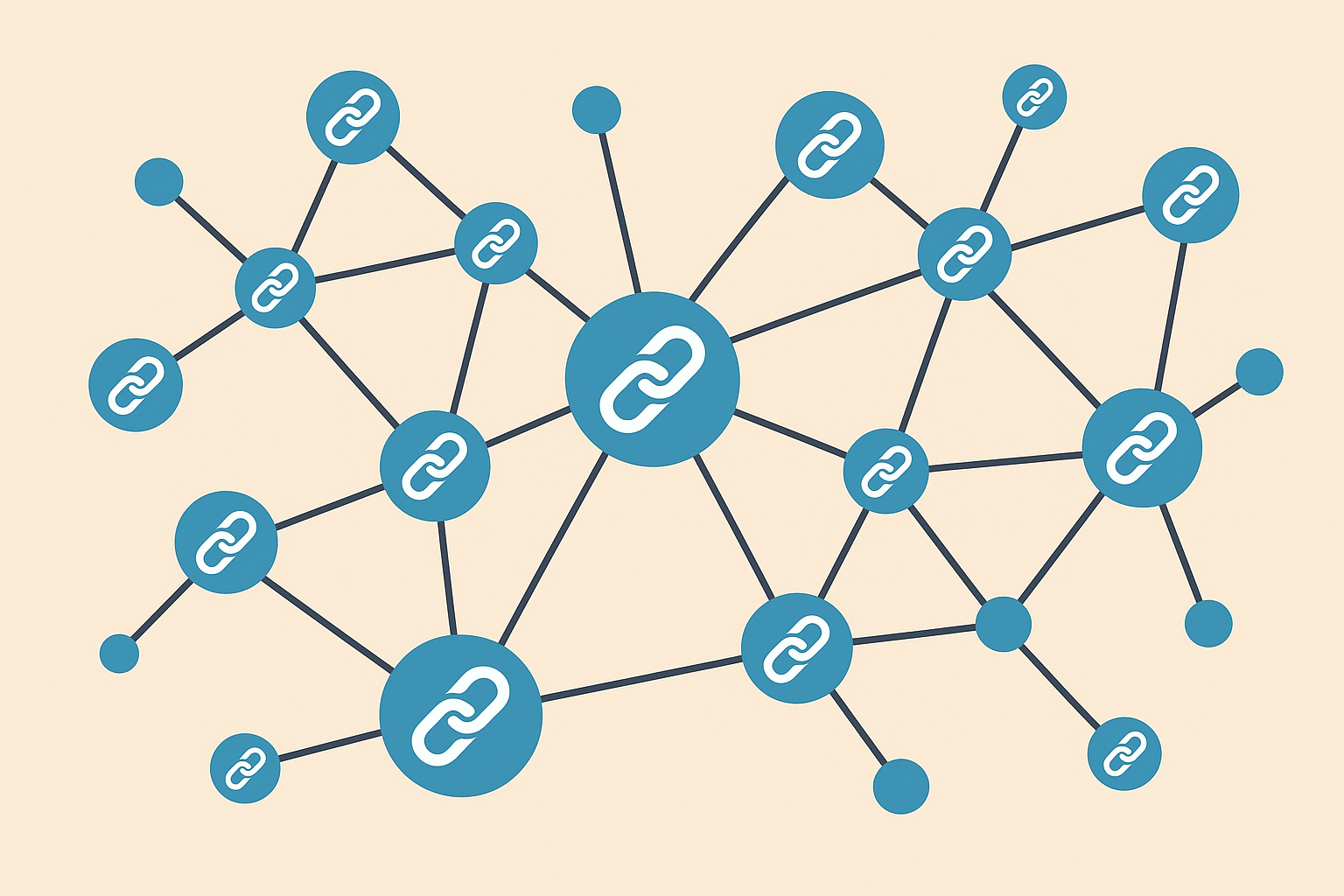
How Google Figures Out If Your Links Actually Make Sense
Okay, this is going to sound nerdy, but stick with me because this changed everything for me. Google isn't just looking at whether you got a backlink - they're checking if that link actually makes sense.
Think of it like this: if you run a dog grooming business and somehow get mentioned in an article about cryptocurrency, Google's basically going "Wait, what? That doesn't add up." Even if that crypto site has massive authority, the backlink feels weird and unnatural.
I learned this the hard way when I spent three months chasing backlinks from high-authority sites that had nothing to do with my client's industry. The rankings barely budged. Then I got one backlink from a small pet industry blog, and boom - we jumped five spots.
It's like Google developed a BS detector for backlinks. They can tell when connections make sense versus when someone's just trying to game the system. The legal industry provides a perfect example of this shift. Google's March 2024 core update continues to prioritize expertise, trustworthiness and quality, making this natural connection validation more critical than ever.
Figuring Out Where You Fit in Google's Big Picture
This part used to make my head spin, but here's the simple version: Google has this massive web of how everything connects to everything else. Your job is figuring out where you fit in that web.
I started using Google's Natural Language API (sounds fancy, but it's actually pretty straightforward) to see what Google thinks my content is really about. Sometimes the results surprised me - what I thought was about "email marketing" Google saw as being about "customer retention."
Once I understood how Google categorized my stuff, I could find websites that lived in the same neighborhood. Instead of randomly reaching out to anyone with high domain authority, I was targeting sites that Google already saw as related to mine.
Quick Reality Check: This isn't about tricking Google. It's about understanding how they see the world so you can work with their system instead of against it.
Where to Start | Tool/Method | What You'll Learn |
|---|---|---|
Extract What Google Thinks Your Content Is About | Google Natural Language API | List of 10-15 core topics with importance scores |
See What Your Competitors Are Connected To | Manual SERP analysis | Topic clusters in your niche |
Find Sites That Make Sense to Target | Topic matching | 20-30 high-relevance domains |
Double-Check the Connections | Knowledge Graph lookup | Confirmed relationships that make sense |
How Authority Flows Through Connected Industries
Here's something that blew my mind: sometimes the best backlinks come from sites that aren't your direct competitors.
I had a client selling project management software. Instead of only chasing other project management blogs (where everyone was fighting for the same backlinks), we started targeting HR blogs, productivity sites, and small business resources. These sites served the same audience but weren't direct competitors.
The results? Those "adjacent" backlinks performed way better than the ones from direct competitors. It's like Google was saying "Oh, this makes sense - project managers would definitely read HR blogs."
A real example: We got a backlink from an HR blog about "managing remote teams," and it drove more qualified traffic than three backlinks from project management publications combined. The lesson? Sometimes the best opportunities are hiding in plain sight, just one step to the side of where everyone else is looking.
A SaaS company selling email automation software discovered that backlinks from project management blogs (adjacent expertise) generated 40% more referral traffic and better rankings than backlinks from direct email marketing competitors. They mapped 50 project management domains that frequently mentioned email workflows, resulting in 12 high-quality backlinks within 6 months.
Why When You Get Links Actually Matters
This is where I made some expensive mistakes early on. I used to launch backlink campaigns whenever I felt like it, without thinking about timing. Big mistake.
Turns out, every industry has natural rhythms for when backlinks happen. Tax software gets linked to heavily in January and February. Fitness content peaks in January and again before summer. B2B software sees spikes around budget planning seasons.
When I started paying attention to these patterns and timing my outreach accordingly, my success rates doubled. It's not just about what you're pitching - it's about when you're pitching it.
Understanding what are backlinks in SEO means recognizing they exist within these timing contexts. A backlink acquired during your industry's natural busy season carries more weight than one obtained during a typically quiet period.
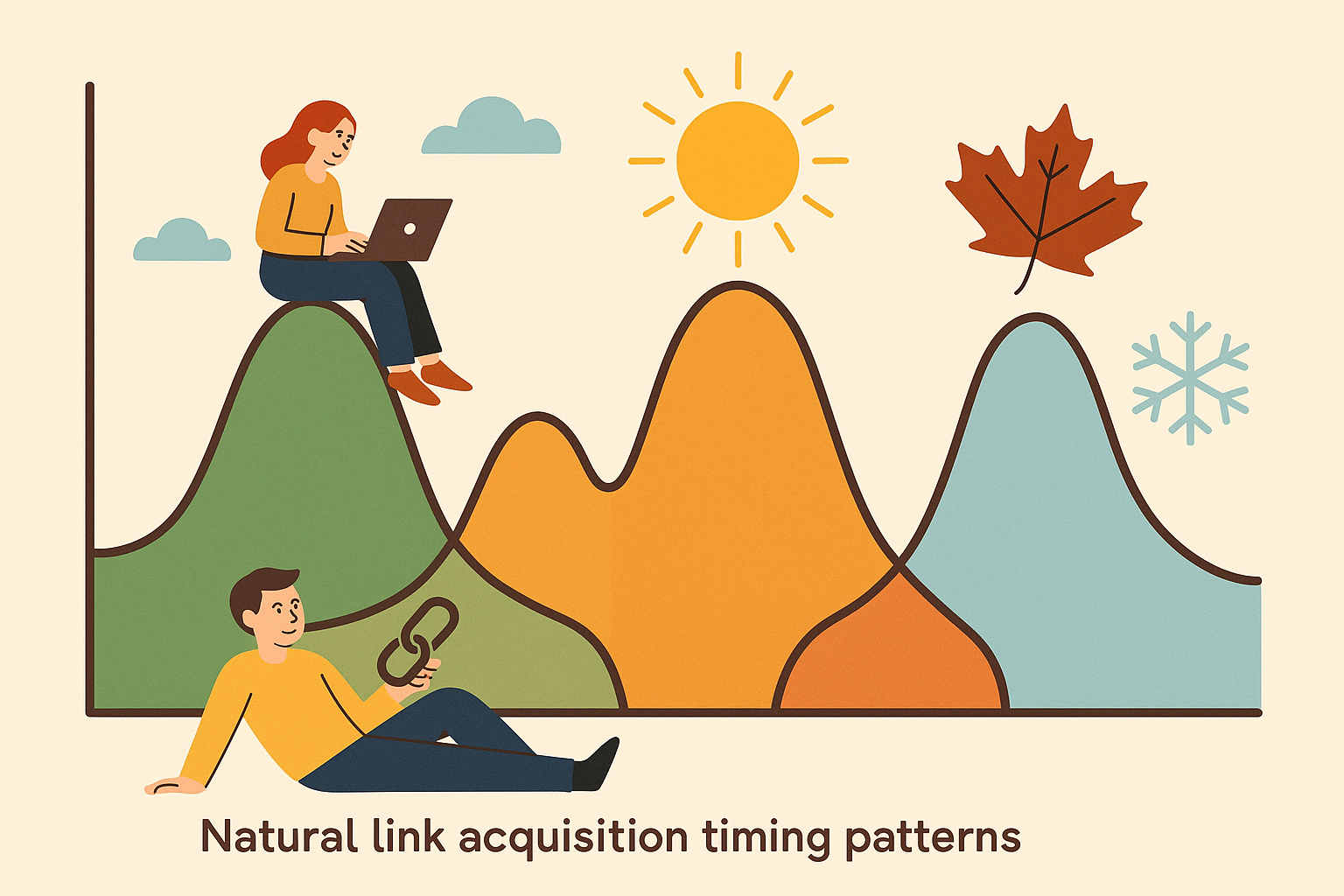
Finding When Your Industry Actually Gets Links
I spent way too long learning this through trial and error. Here's the shortcut: look at when your competitors get their best backlinks.
I started tracking the top 10 sites in my clients' industries and noticed clear patterns. Most of their high-quality backlinks came during specific months. Once I aligned my campaigns with these windows, everything got easier.
For example, one client in the education space saw their best results when we launched campaigns in July and August - right when teachers and administrators were planning for the new school year. Obvious in hindsight, but I never would have thought of it without the data.
Here's What Actually Works:
- Track your top 10 competitors' backlink data for 24 months
- Look for patterns in when they get mentioned
- Identify 3-4 peak seasons annually
- Prepare your best content 60 days before these windows
- Build relationships with journalists during their planning phases
- Set up Google Alerts to catch seasonal opportunities
Keeping Viral Content Working Long After the Buzz Dies
Here's something nobody talks about: viral content dies fast, but it doesn't have to stay dead.
I had a piece of content that went viral and generated 50 backlinks in two weeks. Amazing, right? Then nothing. The backlinks stopped coming, and I watched the traffic slowly decline over the next few months.
Now I know better. When something goes viral, I immediately start planning the follow-up content. At the 30-day mark, I publish an updated version. At 60 days, I create a "lessons learned" piece. At 90 days, I do a deep-dive analysis.
Each follow-up piece links back to the original viral content and gives me new reasons to reach out to people who linked to it the first time. Instead of one viral moment, I get sustained backlink building over months.
The backlink value from viral content doesn't have to disappear after the initial wave. Strategic management of viral content's linking lifecycle can turn temporary spikes into sustained backlink growth over months or even years.
How Search Engines Actually Judge Your Links Now
The biggest shift I've seen isn't just about getting backlinks anymore - it's about what happens after people click on them. Google's watching, and they're taking notes.
I used to think my job was done once I got the backlink. Wrong. Now I spend just as much time thinking about the user experience after someone clicks through. Because if people immediately hit the back button, that backlink isn't helping me - it might even be hurting me.
This realization completely changed how I approach backlink building. It's not enough to get mentioned; you need to deserve the click and deliver on the promise once people arrive. The data supports this behavioral focus: more than 66% of pages have zero backlinks pointing to them. This scarcity makes the behavioral signals from your existing backlinks exponentially more valuable for search engine evaluation.
The Revolution in How Clicks Actually Matter
I discovered this by accident when I noticed that some of my "weaker" backlinks were driving better results than backlinks from major publications. The difference? The smaller sites had audiences that were genuinely interested in what I was offering.
A backlink from a massive general interest site might get 1,000 impressions but only 10 clicks, with visitors spending 30 seconds on my site. Meanwhile, a backlink from a smaller, niche site might get 100 impressions but 20 clicks, with visitors spending 5 minutes exploring multiple pages.
Guess which backlink Google values more? The one that generates real engagement.
The way users interact with backlinks - their click rates, time spent on target pages, and what they do next - now influences how much SEO juice those backlinks provide. This has completely changed how I think about backlink placement and the type of content I create for different audiences.
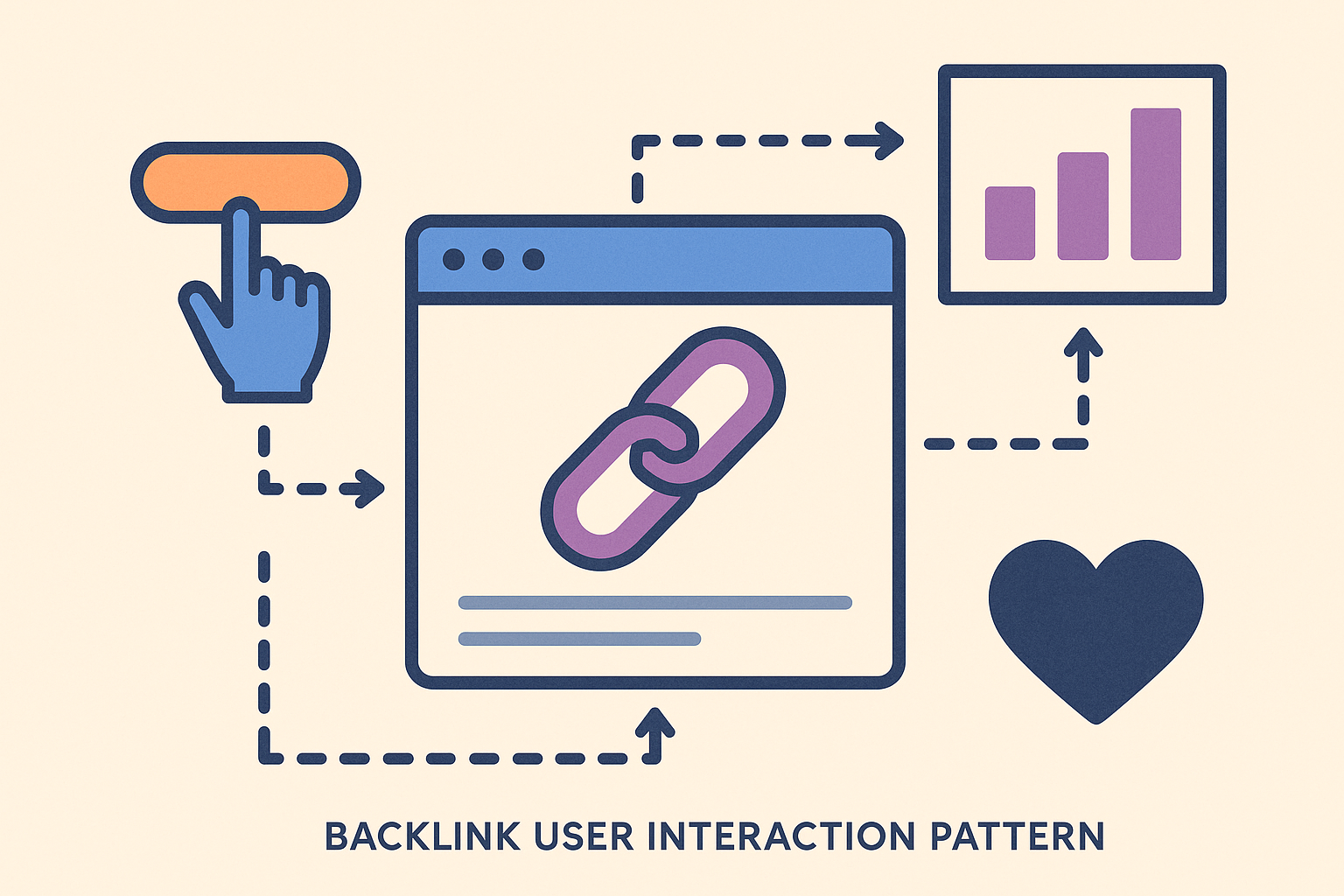
Why Where Your Link Sits Matters More Than the Site's Authority
I used to be happy with any backlink, regardless of where it appeared on the page. Then I started asking linking partners for heat map data, and it changed everything.
Backlinks buried in footers or sidebars? Nobody clicks them. Backlinks in the middle of engaging content? That's where the magic happens. Now I negotiate for placement, not just inclusion.
One client saw a 300% increase in referral traffic when we moved from footer backlinks to in-content mentions. Same sites, same domain authority, completely different results. The lesson? Context matters more than authority.
Backlinks placed in high-engagement areas of web pages carry significantly more weight than those in traditional "SEO-optimized" positions that users actually ignore. I now request heat map data from linking partners and negotiate backlink placement in areas with at least 15% user engagement.
A B2B software company analyzed heat map data from 50 linking partners and discovered that backlinks placed within the first 300 words of articles generated 3x higher click-through rates than footer backlinks. After renegotiating backlink placement with 20 partners, they saw a 45% increase in qualified leads from referral traffic.
Finding Out Which Backlinks Actually Work
I set up a simple tracking system in Google Analytics to see which referring sites send the most engaged visitors. The results were eye-opening.
Some high-authority sites sent traffic that bounced immediately. Others, with much lower authority, sent visitors who stuck around, explored the site, and actually converted. Guess which type of backlink I prioritize now?
This data completely changed my outreach strategy. Instead of chasing domain authority scores, I started researching audience engagement. I'd rather have a backlink from a site whose visitors spend 5 minutes reading than one whose visitors leave after 30 seconds.
My Simple Backlink Quality Tracker:
Referring Site: [Domain Name]
Monthly Visitors They Send: [Number]
How Long They Stay: [Minutes:Seconds]
Pages They Visit: [Number]
Bounce Rate: [Percentage]
Do They Convert: [Percentage]
Overall Quality: [1-10 scale]
What to Do Next: [Keep/Expand/Stop]
How Social Media Buzz Makes Your Links Stronger
Here's something I wish I'd understood earlier: the best backlinks don't just sit there quietly. They generate conversations, shares, and discussions across multiple platforms.
I started noticing that my most valuable backlinks were the ones that sparked social media discussions. Someone would mention the article on Twitter, it would get shared on LinkedIn, maybe discussed in a Reddit thread. That cross-platform activity seemed to boost the backlink's SEO value.
Now I actively try to create that amplification. When I get a great backlink, I don't just celebrate privately - I share it strategically across social platforms to generate additional validation signals.
Creating Buzz Across Multiple Platforms
I developed a system for this: whenever I get a quality backlink, I create shareable assets around it. Quote cards for Twitter, summary posts for LinkedIn, discussion starters for relevant Reddit communities.
The goal isn't to spam - it's to generate genuine conversations around the content. When multiple platforms are discussing the same piece, it sends strong signals to search engines that the content is genuinely valuable and worth ranking.
One backlink that got discussed across Twitter, LinkedIn, and two industry forums ended up driving 10x more organic traffic than backlinks from higher-authority sites that nobody talked about. The social validation made all the difference.
This multi-platform approach turns individual backlinks into broader digital marketing campaigns. The social validation creates compound SEO value that extends far beyond the original backlink.

Why User Behavior Makes or Breaks Your Backlinks
I learned this lesson the expensive way. I had built what looked like a perfect backlink profile - diverse domains, good anchor text distribution, natural acquisition timeline. Everything looked great on paper.
Then Google rolled out an update, and my rankings tanked. I couldn't figure out what went wrong until I realized the issue wasn't with my backlinks themselves - it was with the patterns they created.
Google had gotten scary good at spotting artificial backlink patterns, and mine looked too perfect, too optimized. Real websites don't acquire backlinks with mathematical precision. They get them in messy, unpredictable ways that reflect real human behavior.
The old gaming tactics don't just fail - they actively hurt your rankings. Search engines have become incredibly sophisticated at identifying what are backlinks in seo that result from manipulation versus those that occur naturally. The shift toward quality over quantity is evident in the data: on average, long content receives 77.2% more backlinks than short articles.
Making Your Link Building Look Natural When It's Actually Strategic
The hardest part about modern backlink building is making it look natural when you're being strategic about it. It's like trying to act casual when you're nervous - the more you try, the more obvious it becomes.
I had to completely rethink my approach. Instead of planning backlink campaigns with military precision, I started building systems that introduced natural randomness and variation. Backlinks from different types of sites, acquired at different times, with naturally varied anchor text.
The key insight: Google's not just looking at individual backlinks anymore. They're analyzing the entire pattern of how you acquire backlinks over time. If that pattern looks too clean, too strategic, it raises red flags.
Understanding these anti-gaming systems is crucial for anyone serious about sustainable SEO growth. The backlinks that survive algorithm updates are those that pass increasingly sophisticated authenticity tests.
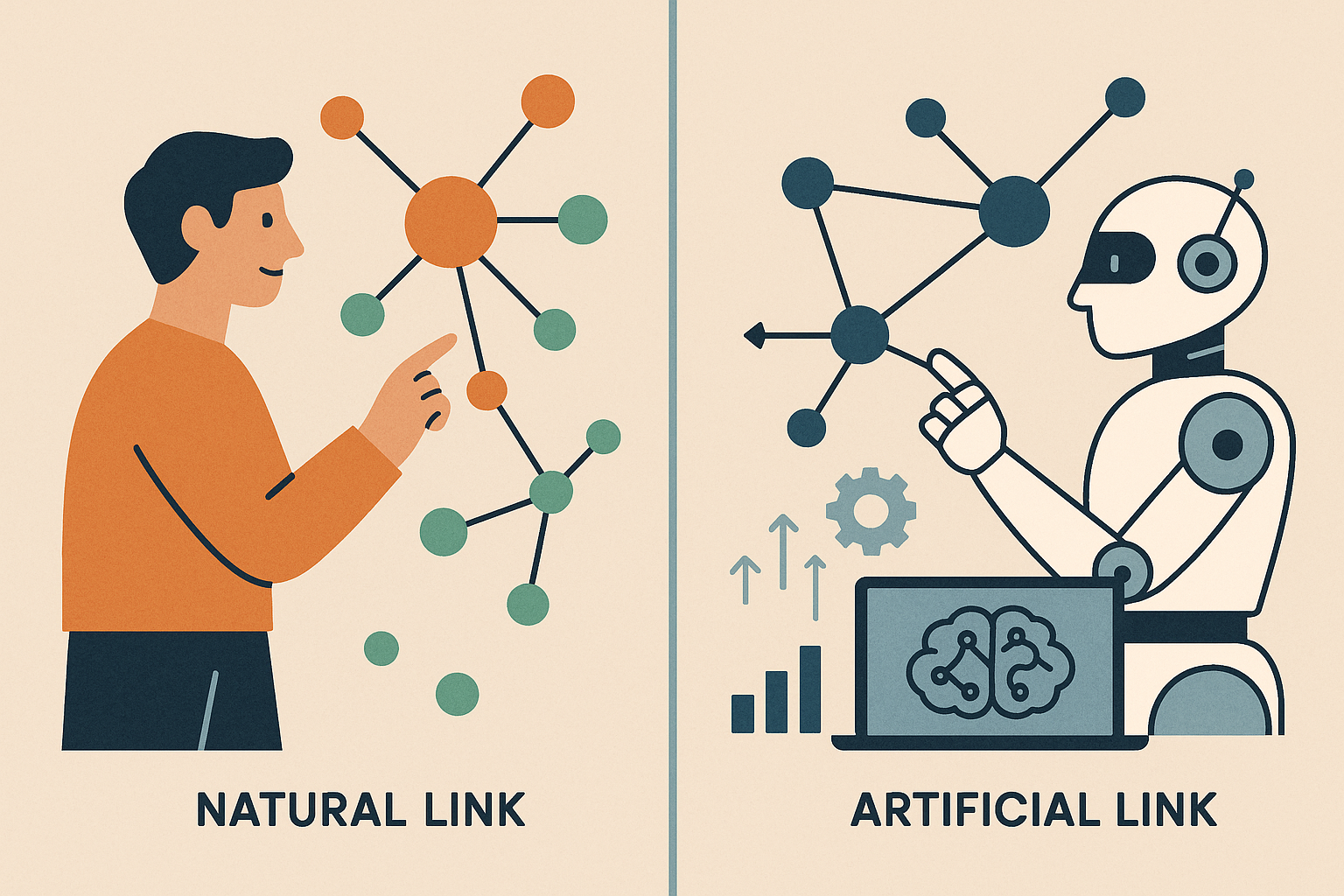
Writing Anchor Text Like a Real Human Would
I used to obsess over exact match anchor text. Big mistake. Real people don't link with SEO keywords - they use natural language. Now I aim for anchor text that sounds like something a human would actually write. "Check out this great tool" instead of "best email marketing software." "Here's an interesting study" instead of "SEO backlinks research."
I use what feels like natural conversation principles to manage anchor text distribution, aiming for 60-70% branded/natural anchors, 20-25% partial match, and 10-15% exact match. The trick is using variations and synonyms while tracking competitor anchor text patterns to identify what's normal in my industry.
The result? My anchor text distribution started looking genuinely natural, and the backlinks felt more authentic to both users and algorithms.
Anchor Text Type | What Percentage to Aim For | Examples | How Risky Is It |
|---|---|---|---|
Branded/Natural | 60-70% | "Company Name", "Click here", "Learn more" | Safe |
Partial Match | 20-25% | "Best email marketing", "SEO tools review" | Medium Risk |
Exact Match | 10-15% | "Email marketing software", "SEO backlinks" | Higher Risk |
Just URLs | 5-10% | "https://example.com" | Safe |
Making Your Link Growth Look Human Instead of Robotic
This is where math actually helps. Instead of acquiring backlinks in bursts (which looks artificial), I spread them out using natural growth curves.
I started thinking about backlink acquisition like a savings account. You don't dump your entire paycheck in once a month - you make regular, varied deposits. Same principle applies to backlinks.
Some months I'd get 5 backlinks, others 12, occasionally none at all. The pattern looked human because it reflected the natural ebb and flow of real content marketing efforts.
I implement mathematical smoothing functions to ensure backlink acquisition follows natural growth curves rather than artificial spikes. This involves building buffer periods between major campaigns and varying backlink types in rotating patterns.
Building Networks That Don't Scream "SEO Campaign"
I map my backlink network using visualization tools to identify clustering patterns that might appear artificial. The goal is targeting domains that fill network gaps and reduce over-clustering.
Natural web connections follow specific patterns that you can replicate. Understanding these patterns helps build backlink networks that appear genuinely diverse to algorithmic analysis.
The what are backlinks in seo question becomes more complex when you consider network topology. Backlinks that create natural network diversity carry more weight than those that increase clustering around existing connection patterns.
Building Links Across Every Platform That Matters
The biggest revelation of my career was realizing that the best backlinks often don't start as backlinks at all. They start as mentions on podcasts, features in newsletters, or discussions on social media. Then they evolve into traditional web backlinks through complex user behavior patterns.
I was so focused on direct backlink building that I was missing 80% of the opportunities. Once I started thinking about cross-platform mention building, everything changed.
Modern backlinks exist within interconnected digital ecosystems where backlinks from one platform influence rankings and opportunities across multiple channels. The types of backlinks that matter today extend far beyond traditional web backlinks.

How Mentions Turn Into Real Links Through User Behavior
Here's how it actually works: Someone mentions you on a podcast. A listener Googles your company, finds your website, and three weeks later writes a blog post that links to you. That's not a direct connection most people would track, but it's happening constantly.
I started mapping these attribution pathways and discovered that podcast mentions generated more eventual web backlinks than most of my direct outreach campaigns. The conversion rate was lower, but the backlinks that resulted were incredibly high-quality because they came from genuine interest and research.
Backlinks from different platforms create attribution cascades that compound SEO value in unexpected ways. Podcast mentions, newsletter features, and social media engagement often convert into traditional web backlinks through complex user research behaviors that search engines are now tracking and valuing.
Turning Podcast Mentions Into Web Links
I stumbled onto this by accident when I heard traffic spikes 2-3 months after podcast appearances. People weren't just listening - they were researching, and that research was leading to backlinks from unexpected sources.
The compound effect is incredible. One podcast mention typically generates 3-5 web backlinks over the following 6 months as listeners research and write about related topics.
I identify podcasts with detailed show notes, create "podcast-friendly" data points for easy mention, and develop relationships with podcast producers who handle show note creation. Tracking referral traffic from podcast platforms helps measure conversion to web backlinks.
A fintech startup tracked 25 podcast mentions over 6 months and discovered that 60% converted into web backlinks within 90 days. Listeners researched mentioned companies, leading to editorial coverage, directory listings, and partner page inclusions. The compound effect generated 4x more backlinks than the original podcast mentions.

Getting Links From Newsletter Archives
Many newsletters republish their best content to web archives, creating delayed backlink opportunities that most people never notice. I started building relationships with newsletter editors specifically because I knew their mentions would eventually become permanent web backlinks.
The timeline is longer - sometimes 6-12 months - but the backlinks that result are incredibly valuable because they represent curated, editorial-quality content that someone chose to preserve permanently.
I research which newsletters maintain web archives, create newsletter-optimized content formats, and build relationships with newsletter curators. Monitoring newsletter web archives for backlink opportunities 6-12 months post-mention has become a crucial part of my strategy.
Newsletter Archive Strategy:
- Find newsletters in your industry with web archives
- Create newsletter-friendly content (bullet points, statistics)
- Build relationships with newsletter editors
- Track mentions in newsletter issues
- Monitor web archives 6-12 months later
- Set up Google Alerts for archived newsletter content
- Track conversion rates from newsletter to web backlinks
Building the Social-to-Editorial Pipeline
The best editorial backlinks I've ever gotten started as social media conversations. A journalist would see a discussion on Twitter, reach out for comment, and eventually publish a piece that linked to my content.
I started being more strategic about social engagement, especially with journalists and editors in my space. Not pitching them directly, but engaging authentically with their content and contributing valuable insights to industry discussions.
This approach takes longer but generates much higher-quality backlinks than cold outreach. When a journalist links to you because they've seen your expertise in social discussions, that backlink carries real editorial weight.
I monitor social media for journalists who cover my industry, engage authentically with their content before pitching, and create social-first content designed to catch editorial attention. Tracking the conversion rate from social engagement to editorial backlinks helps optimize this pipeline.

Final Thoughts
After years of chasing the latest backlink building tactics, I've learned that the best approach is surprisingly simple: create genuinely valuable content, build real relationships, and focus on long-term value rather than quick wins.
The backlink landscape has fundamentally shifted from quantity-based tactics to sophisticated, behavior-driven strategies that require genuine expertise and long-term thinking. What is a backlink in today's SEO environment? It's a complex signal that encompasses how things connect, user behavior, cross-platform validation, and natural network patterns.
The backlink landscape has become more complex, but it's also become more fair. The tactics that work today - understanding how things naturally connect, optimizing for user behavior, building cross-platform presence - these aren't tricks or hacks. They're just good marketing.

What used to be about gaming the system is now about understanding it well enough to work with it naturally. The sites that thrive in today's SEO environment are those that deserve to thrive - they provide real value, build genuine relationships, and earn their backlinks through quality rather than manipulation.
Understanding what are backlinks means recognizing they exist within interconnected digital ecosystems where what are backlinks in seo extends far beyond traditional web backlinks. The build backlink strategies that work today require systematic thinking about types of backlinks, cross-platform attribution, and long-term relationship building.
The most successful backlink builders I know treat their backlink portfolios as investment portfolios - diversified, systematically grown, and focused on long-term compound growth rather than quick wins. They understand that every quality backlink acquired today increases their site's ability to attract future backlinks naturally, creating a compounding effect that builds over decades.
Backlinking success requires understanding backlinks and seo as interconnected systems rather than isolated tactics. The backlinking approaches that survive algorithm updates are those built on authentic relationships, valuable content, and natural growth patterns.
If you're feeling overwhelmed by all this complexity, start simple. Pick one approach from this guide and focus on it for the next 90 days. Master that, then add another layer. The compound effect of consistent, quality backlink building will surprise you.
The future belongs to websites that understand backlinks aren't just about SEO - they're about building a genuine presence in your industry's digital ecosystem. Focus on that, and the rankings will follow.




